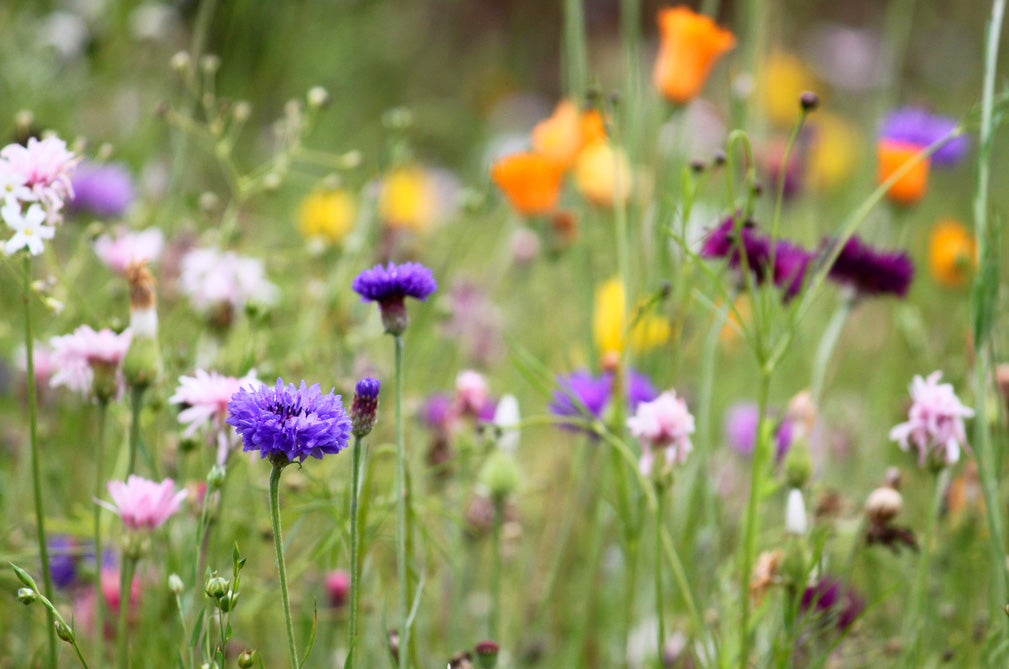Brighten your landscape with forsythia
ListenMike McGrath explains how to divide hardy hostas, tips and tricks for planting garlic, how to avoid noxious lawn treatments, what to do about blueberry pests, how to protect your spring bulbs from evil squirrels, approaches to planning a rain garden and getting your forsythia to flourish.
Question of the Week:
“I’d love to hear a deep discussion on forsythia; specifically on propagating a forsythia hedgerow from scratch. I would like them as a garden border and bird habitat. Would cuttings be best? Or should I purchase plants and bury some of the branches to thicken the stand? In short, what are the best ways to propagate new forsythia?”
— Kai in Boston
Tips for growing forsythia »
Highlights from show for March 29, 2014:
Getting hostile with hardy hostas
Erin from Blackwood, New Jersey know she needs to separate her hostas this spring, but she’s concerned that she might hurt lose her plants in the process. Mike balks at the suggestion that anyone could kill a hardy hosta! Mike gives Erin step-by-step advice: In mid-late May when the soil is completely unfrozen and dry, Erin should dig them up and divide them before any flowers start to emerge. Mike explains: “I find digging up hostas generally to be a four man job if you’re doing it manually. That’s four guys with big pointy shovels and they work around the outside of the plant and the keep trying to push up, push up push up, and they’re going to keep going down further and further until finally they’re going to get this giant honking root out of the ground. And when I did this by the way, no exaggeration, some of the roots were bigger than an elephant’s foot … And that’s when I did one of the most manly things I’ve ever done in gardening. I fired up the chainsaw and I quartered that sucker. And then I dropped one of them right back in the same hole, filled in around it with lousy grey soil. And I planted the other three quarters somewhere else. And they all bloomed that year!” Chainsaw or no, Erin can definitely handle this necessary operation.
Planting garlic
Tom from Pipersville, Pennsylvania received some garlic to plant in the fall, but he completely forgot to plant it! He calls Mike to see if he can still plant these neglected, sprouted bulbs. Mike reminds Tom that the best time to plant garlic is in the fall for a spring harvest, that the bulbs should be separated into individual cloves, and planted six-inches apart and six-inches deep in rich soil. Still Mike thinks Tom can save this garlic by planting it this spring in containers full of soil free mix located in a sunny spot. The bulbs might be smaller than bulbs planted in the fall, but Tom’s modest harvest of homegrown garlic will still be very tasty.
Noxious lawn treatments
Recently Julia from Oklahoma City, Oklahoma noticed that her neighbors applied a strong-smelling “pre-emergent” herbicide with green dye to their lawns. As a gardener and a mother of four young children, Julia spends a lot of time outside with her family and she is concerned about air quality and chemicals. She was told by her local government that these lawn treatments are low toxicity, but she calls to ask for Mike’s opinion. Mike has good and bad news for Julia: “The good news is that this is changing, for instance this year for the first time in Maryland and Virginia there are heavy restrictions on what can be done to lawns and what can be done at this time of year. In some other states there are restrictions on the the kind of poisons that were sprayed on your local lawns. And the pendulum is swinging very strongly in the way of the homeowner.” Mike suggests that she look up local regulations involving lawncare, spraying, and wind-speed with the organization Beyond Pesticides and petition the local authorities about this issue. In the meantime, Julia can keep her children safe from the lawn chemicals that the family might track into the house, by implementing a “no shoes indoors” rule.
Blueberry pests
Marlene form Morrisdale, Pennsylvania has a lot of questions for Mike. But the biggest one is that she’s having problems with her blueberries, which she has successfully cultivated for many years. Last year when Marlene’s bushes were fruiting, she covered them with a row cover to keep the birds out like usual. When she tried to harvest the fruit she noticed clusters of yellow worms on her bushes. Mike reminds Marlene “Gardening always has something new for us.” He identifies the bests as a type of caterpillar and suggests that Marlene can prevent these pests organically by applying a natural deterrent like Bacillus thuringiensis (BT).
Protecting bulbs from squirrels
Marian from Newcastle, Delaware calls Mike to share a tip on keeping “evil squirrels” away from her tulip, crocus, hyacinth, and daffodil bulbs. When she planted hers she installed a layer of chicken-wire and they’ve been safe for years. Mike says: “I have used the chicken wire trick in my raised beds for protection against not only evil squirrels but against cats! … It is an ancient remedy that is highly effective, it’s very cheap you only do it once and the chicken wire lasts for years. And as you and I know once you plant your bulbs you just press the chicken wire down hard into the soil and it disappears, you don’t see chicken wire on top of the soil. And you can do the same thing if they terrorize your raised beds.”
“I have used the chicken wire trick in my raised beds for protection against not only evil squirrels but against cats! … It is an ancient remedy that is highly effective, it’s very cheap you only do it once and the chicken wire lasts for years.”
Mike McGrath
-

Photo by Flickr user pelican
Plantings for a very wet property
David from Burlington, New Jersey wants to plant shrubs and trees in his wet, heavy clay soil. After hearing David describe his soggy current landscape, Mike thinks that an underground river might flow below his property. Mike explains: “Two choices: One is you can aerate the soil. That would involve punching holes, renting a machine that pulls plugs out of the soil … Aeration alone may not be enough. If you want to have a typical suburban landscape you might have to have drain tiles installed … One way to get a really nice landscape with perhaps less work is what’s called a rain garden … These were originally designed to help people who have storm water come onto their property on a regular basis… But they can also be a great godsend for a place like yours.” Mike suggests that river birch, willow, irises, and other water loving plants will thrive in a rain garden on David’s property.
— This week’s post was written by Marissa Nicosia, You Bet Your Garden intern
WHYY is your source for fact-based, in-depth journalism and information. As a nonprofit organization, we rely on financial support from readers like you. Please give today.







